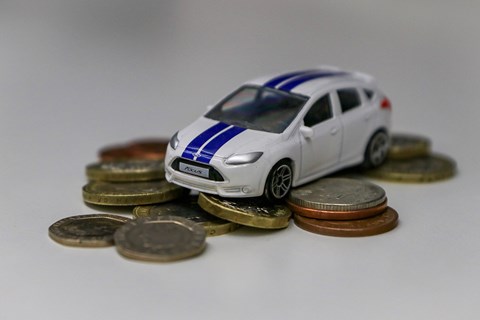► How company car tax works
► Benefit-in-kind (BIK) tax explained
► Why CO2 emissions will cost you more
Company cars are meant to be perks of the job, but that doesn’t stop the taxman levying duty on them. Company car tax seems more complex than it is: read on to find out what it means and how company car rates work.
Getting a work car is incredibly popular in the UK, with roughly one in two new cars registered each year a fleet purchase.
What is benefit-in-kind (BIK) tax?
A company car is seen as a benefit-in-kind by the tax authorities, since it’s usually supplied as a perk in addition to an employee’s salary. This means that if you use a company car, you are required to pay annual tax on it, in the same way that you would if your employer gave you free medical insurance or use of a mobile phone.
BIK tax rates change most years and the Chancellor’s annual Budget sets the bandings each spring. In the UK, company car tax is decided by a vehicle’s emissions, its value and your personal income tax rate. Although car tax is rising, so is the clean car movement: if your car emits less CO2, you pay less to Her Majesty’s Revenue and Customs (HMRC).
VED and car tax: how annual road tax works in the UK
How is company car tax calculated?
Taxable values for cars are based on their CO2 emissions. The dirtier your car, the higher the tax band. Conversely, if your vehicle has very low CO2 output, it will be cheaper to tax.
Each company car tax band spans 5g/km of CO2 emissions. Check your car’s CO2 figure (this is available widely online, in your car’s paperwork or on your V5C logbook from the DVLA) and read across the table below to see which band it is in:
|
% of P11D
|
CO2 g/km
|
|
16%
|
0-50
|
|
19%
|
51-75
|
|
22%
|
76-94
|
|
23%
|
95-99
|
|
24%
|
100-104
|
|
25%
|
105-109
|
|
26%
|
110-114
|
|
27%
|
115-119
|
|
28%
|
120-124
|
|
29%
|
125-129
|
|
30%
|
130-134
|
|
31%
|
135-139
|
|
32%
|
140-144
|
|
33%
|
145-149
|
|
34%
|
150-154
|
|
35%
|
155-159
|
|
36%
|
160-164
|
|
37%
|
165+
|
Since April 2018 add 4% for diesels up to a maximum of 37% (unless RDE2 compliant)
The percentage figure correlating to your vehicle’s emissions is then applied to the vehicle’s list price to work out how much you will be taxed on. We’ll explain this value, often referred to as the P11D, in a moment. The cheaper and cleaner your car, the less you’ll pay in company car tax. But drive a dirty, expensive gas guzzler, and your BIK bill will be quite sizable.
Once you have a BIK value, it all comes down to your annual salary: you pay tax on the value corresponding to your income tax bracket (eg 20% or 40%).
What is P11D?
The P11D value is the total value of a car when it was new, including list price, optional extras, VAT and delivery charges from the manufacturer. However, it does not include the DVLA first registration fee or annual road tax. It therefore tends to look slightly different to the actual on-the-road price quoted by dealers or the figures we usually quote.

Technically, P11D is a tax form filed each year by British employers, and sent off to whichever tax office their pay-as-you-earn (PAYE) tax scheme is registered with. Here’s the government’s P11D form which manually helps you work out the taxable value for your car. Or if you would prefer a speedier approach, here’s the company car tax calculator provided by our sister website Parkers.co.uk.
Here’s a sample benefit-in-kind calculation:
Car P11D value: £20,000
CO2 emissions: 120g/km
Company car tax band: 28%
Taxable benefit-in-kind: £5600 (28% of £20,000)
Driver BIK tax bill: £1120 per annum (lower rate taxpayer at 20% tax), £2240 (higher rate taxpayer at 40% tax)
Company car tax for petrol, diesel, hybrid and electric cars
The government decided last decade to determine car tax rates based on CO2 emissions, in a bid to cut clean up the fleet of company cars in the UK. That accelerated the take-up of diesel cars, on account of their low carbon emissions, but there is now a surcharge on oil-burners to reflect their higher NOx and particulate output.
This explains why you are likely to carry a 4% surcharge from 2020 on your BIK tax for a diesel car, unless it meets the new RDE2 standards. Petrol cars get away without this since they emit fewer harmful substances, but electric cars win gold with the lowest BIK rates, currently at 13%. However, that will become dramatically lower in 2020-2021, when full EVs will qualify for considerably lower company car tax.
From April 2020, new electric car tax rates will take into account range on battery power. Cars with less than 30 miles’ electric range will pay 14% benefit-in-kind, with a sliding scale down to 2% if your car will drive more than 130 miles on silent e-power. It’s designed to reflect the growth in plug-ins and rewards those with the greatest range.

RDE2 is part of the new WLTP efficiency standards introduced in the wake of the Volkswagen emissions scandal. RDE stands for Real Driving Emissions – it’s a new EU test to measure how close a vehicle comes to its claimed emissions and should show a more representative mpg and CO2 figure for all cars.
If you find calculating your company car tax complicated, remember this: the best way to reduce company car tax is simply to pick a cleaner, cheaper car.